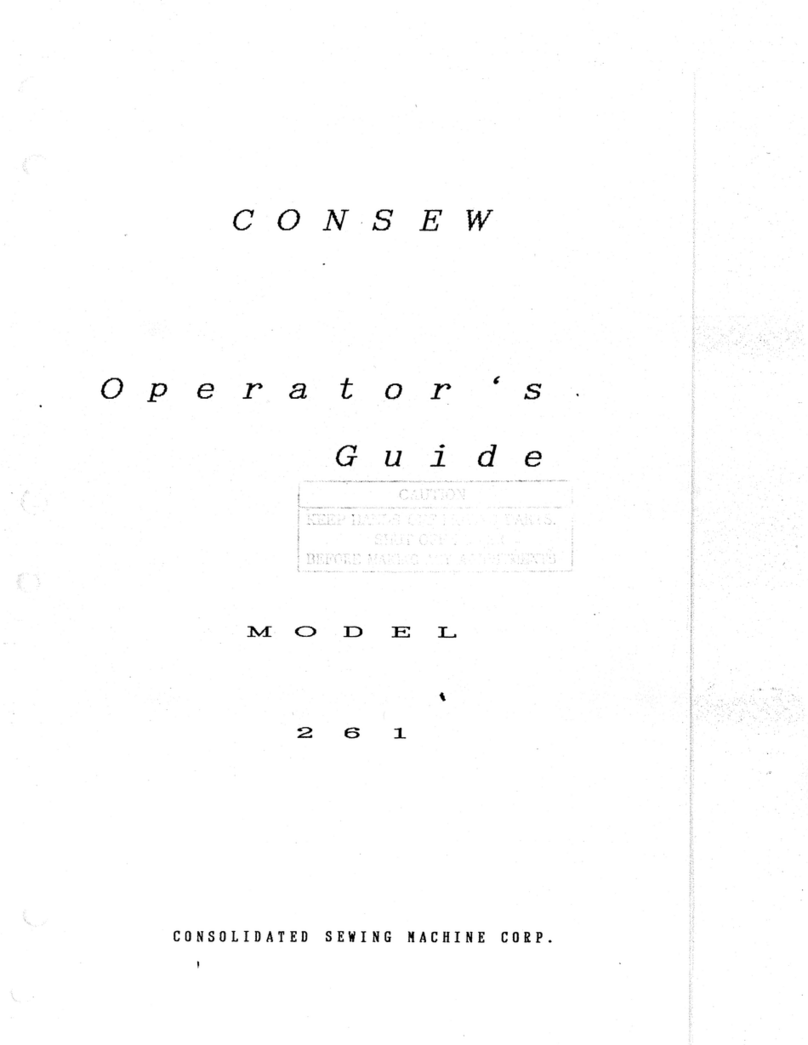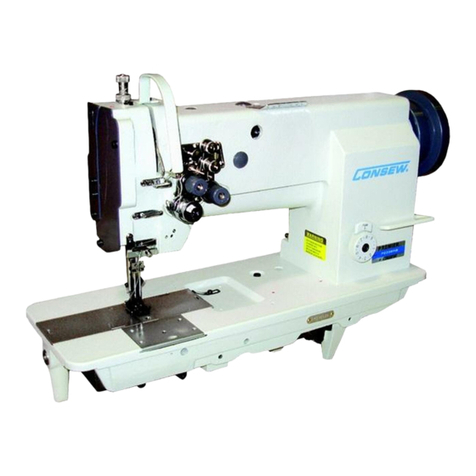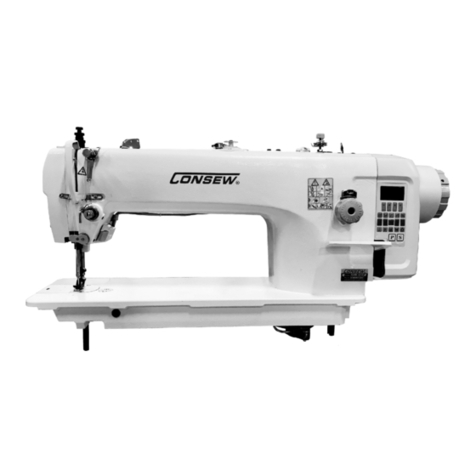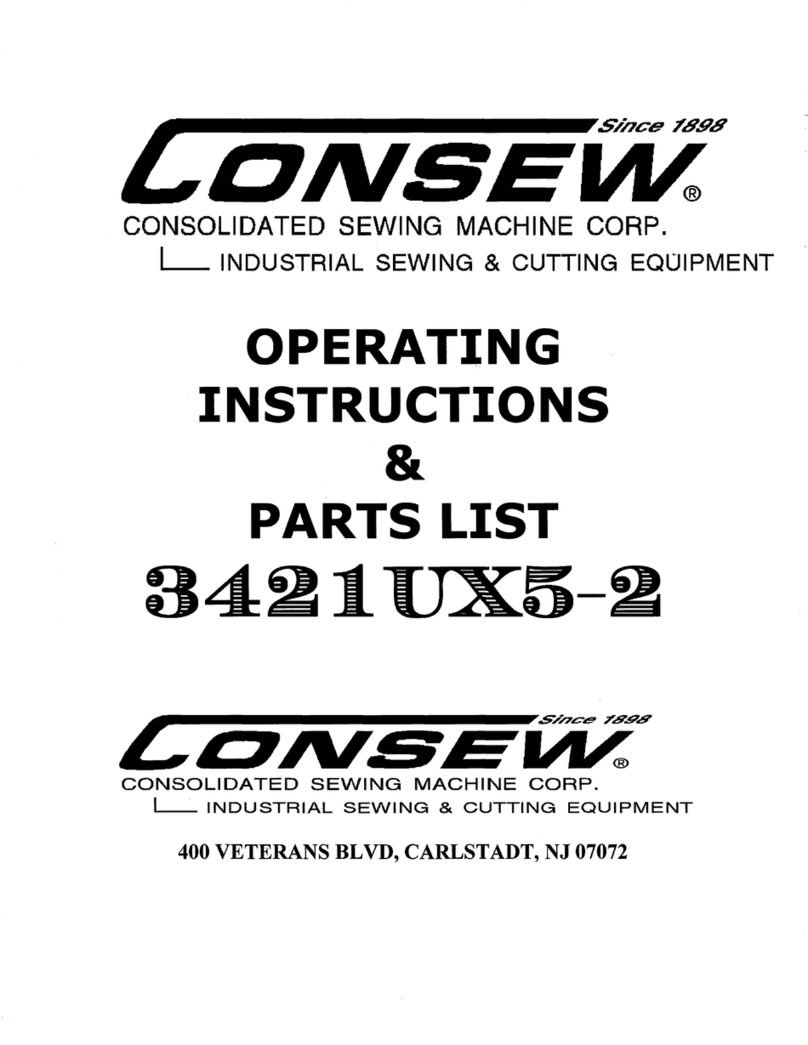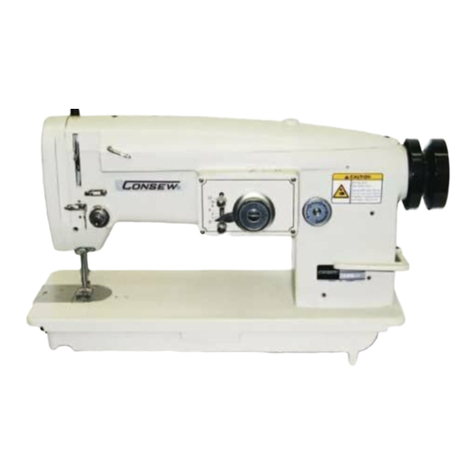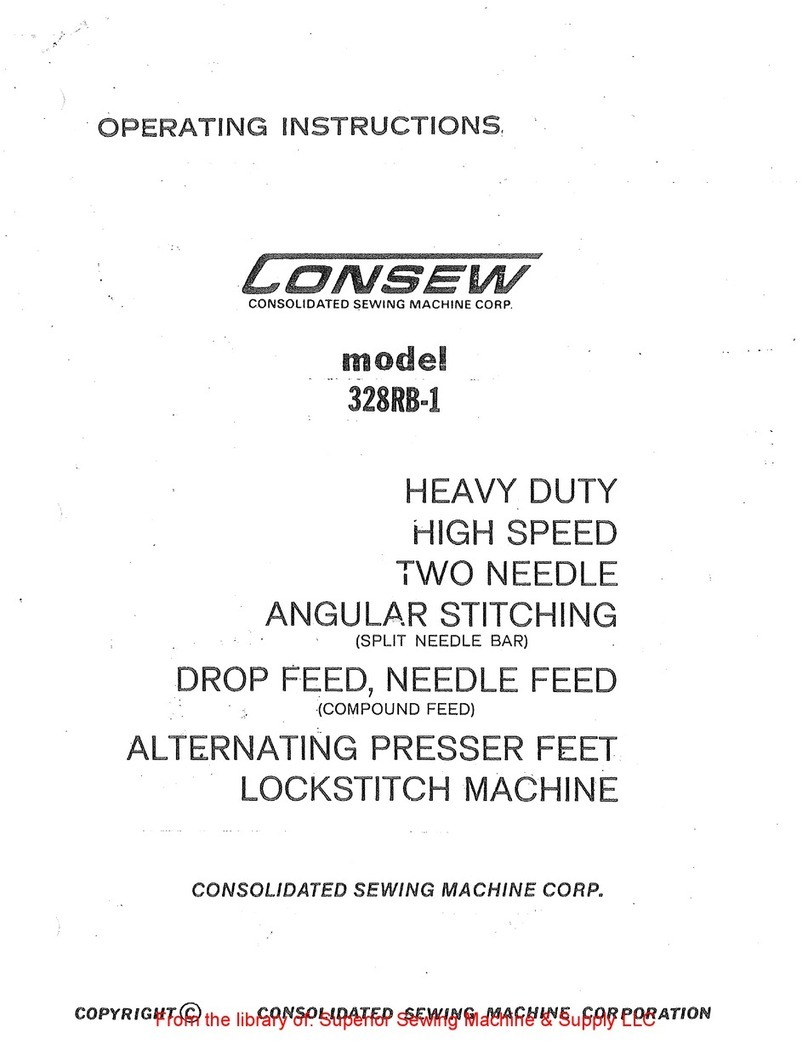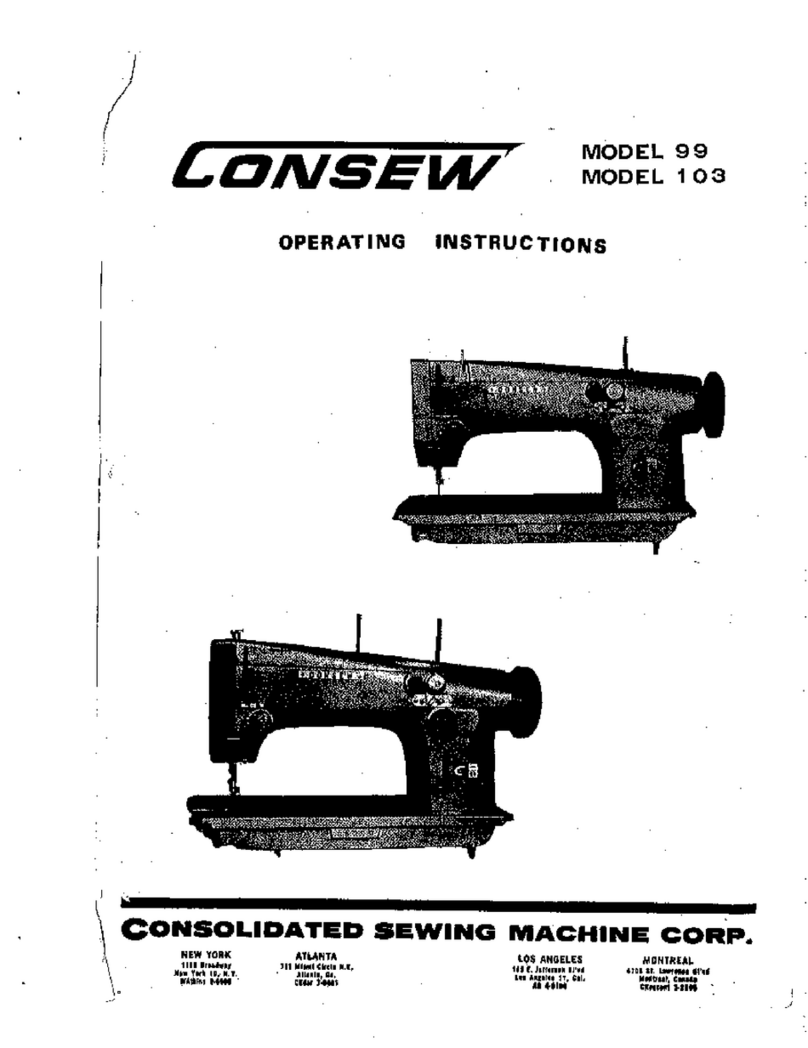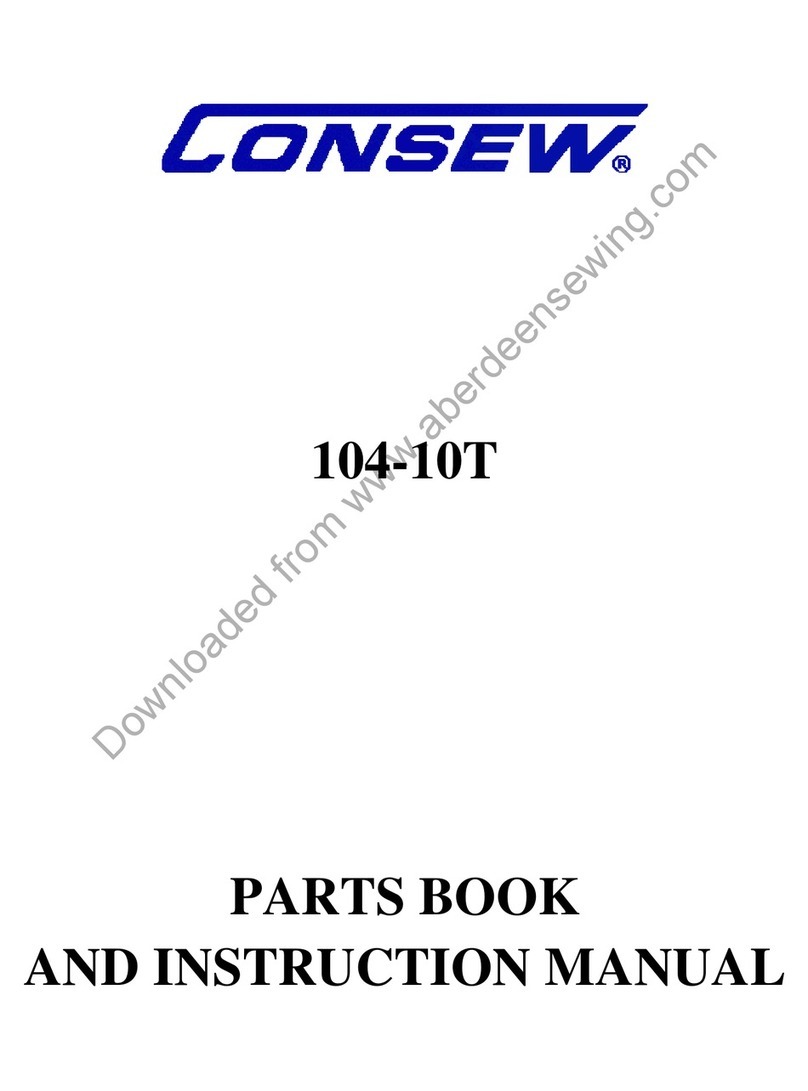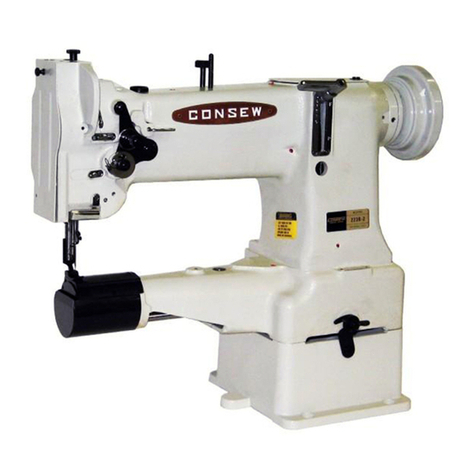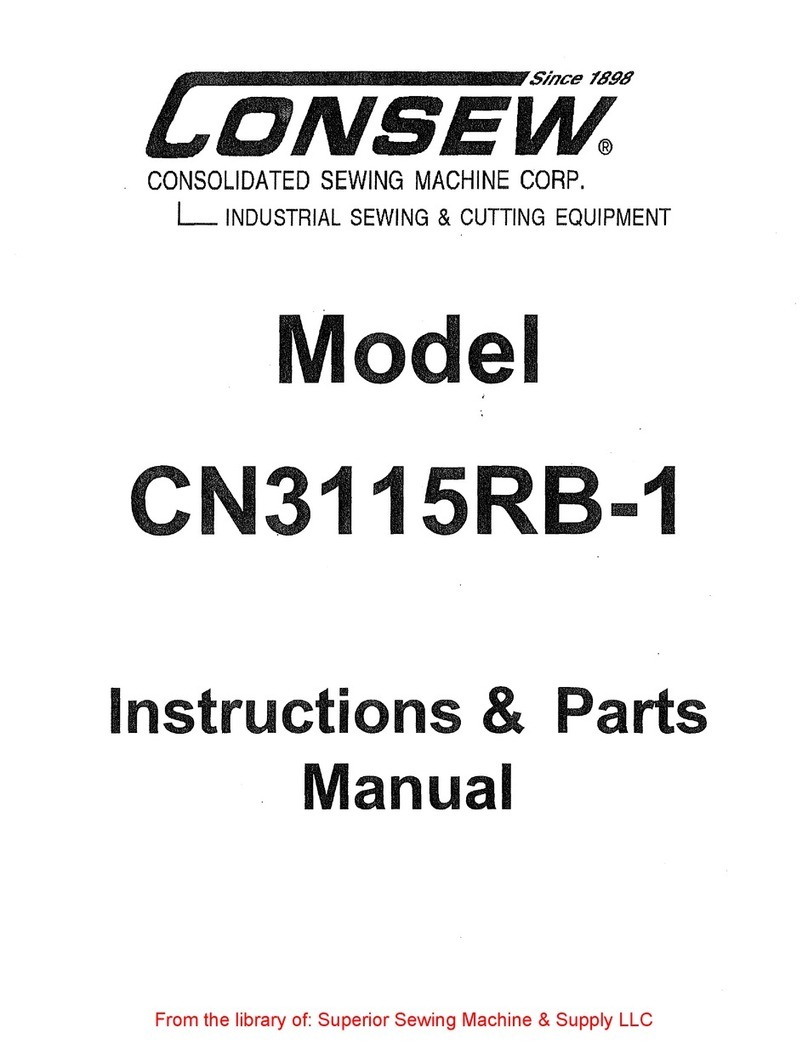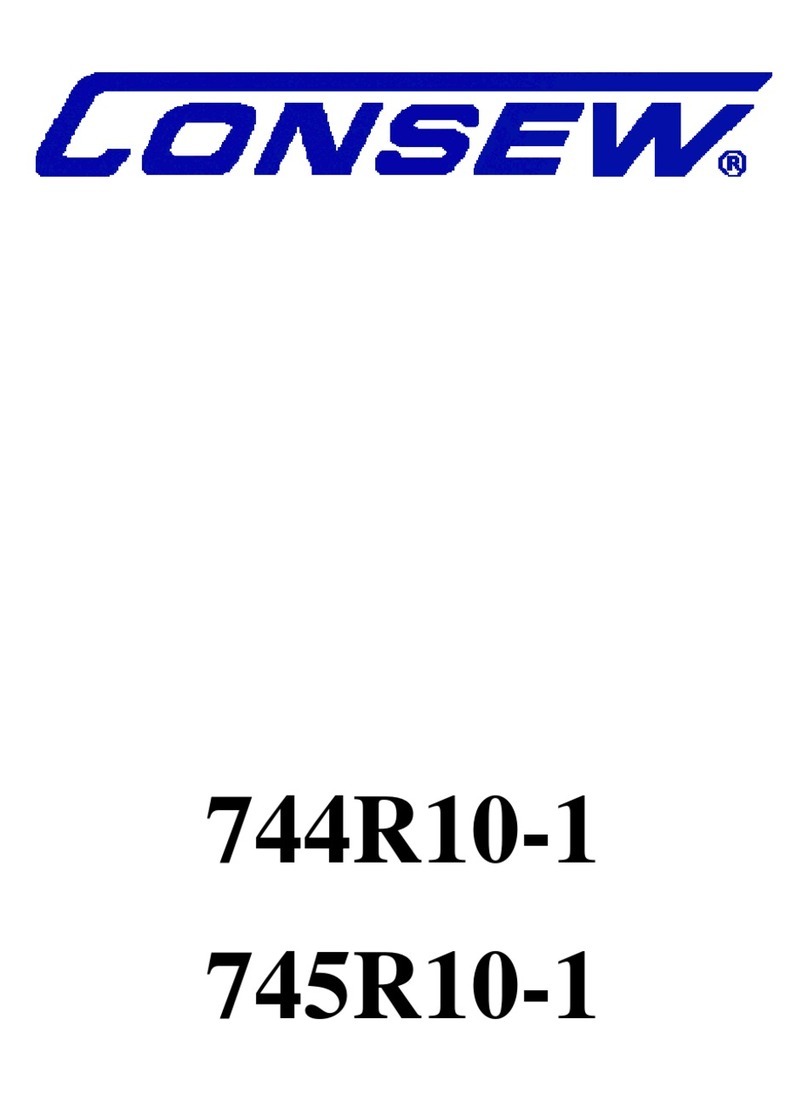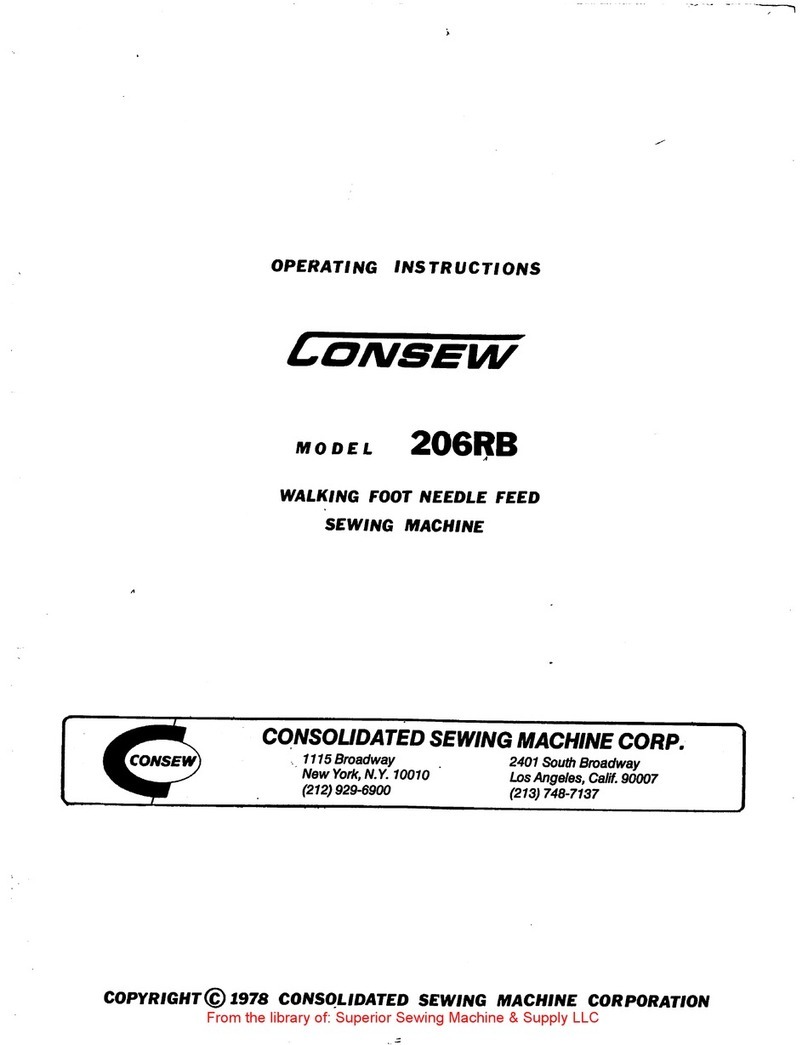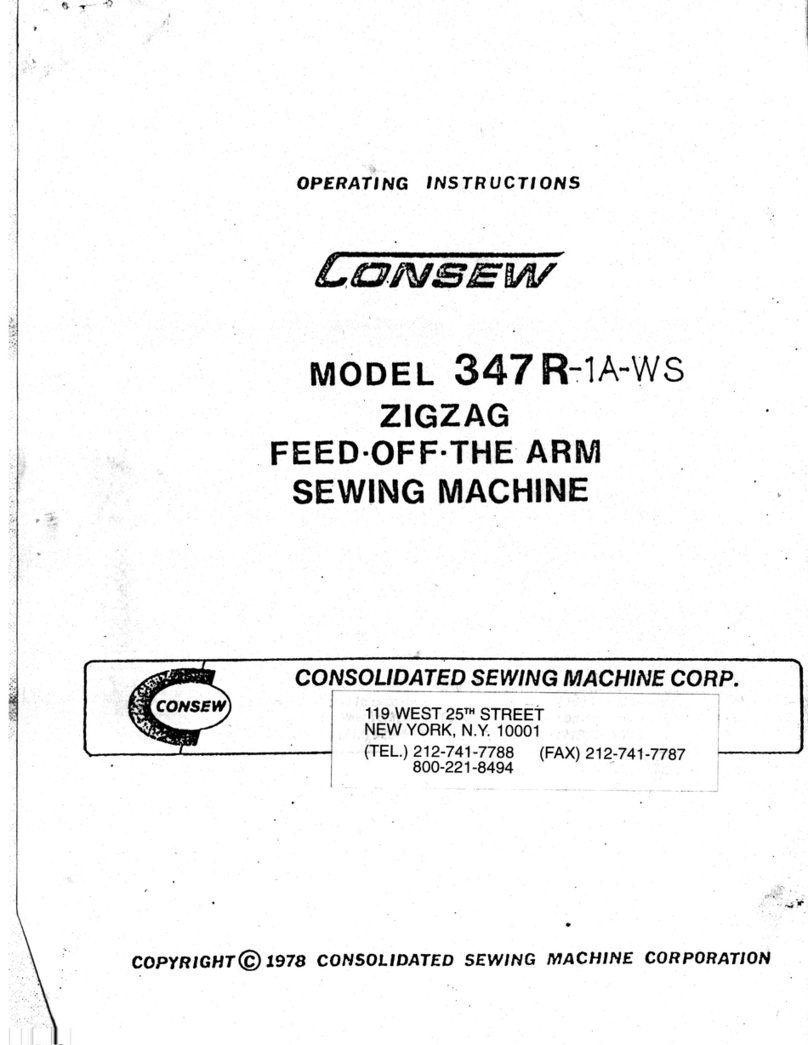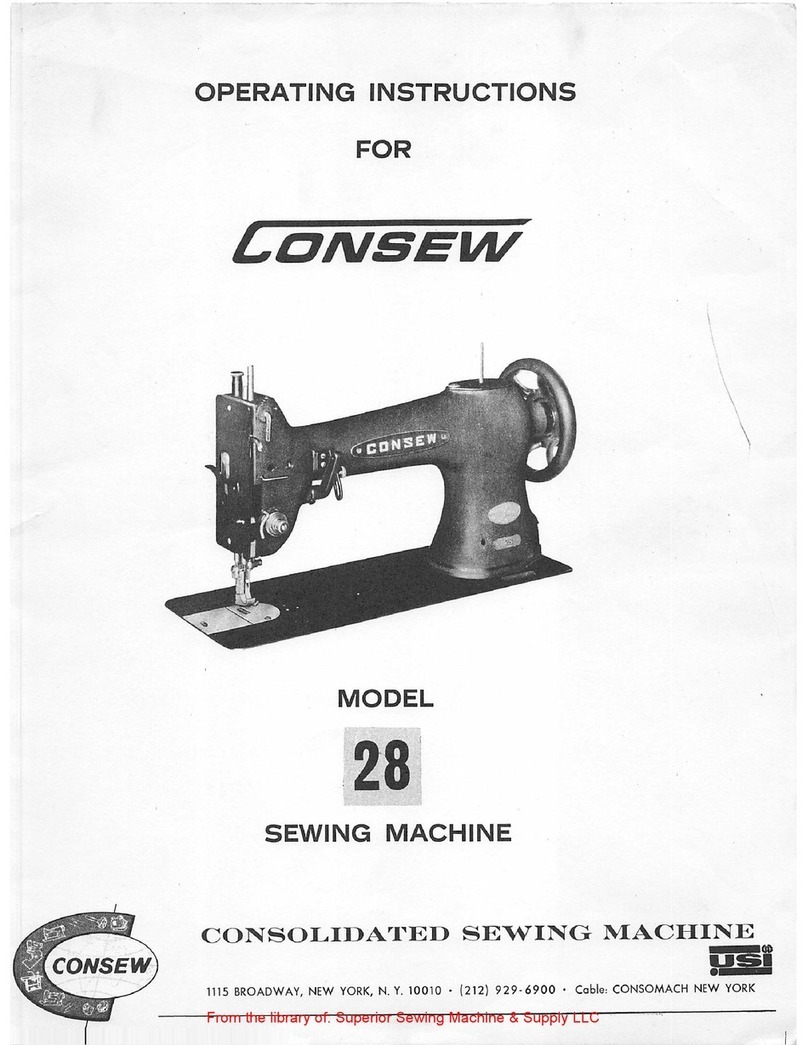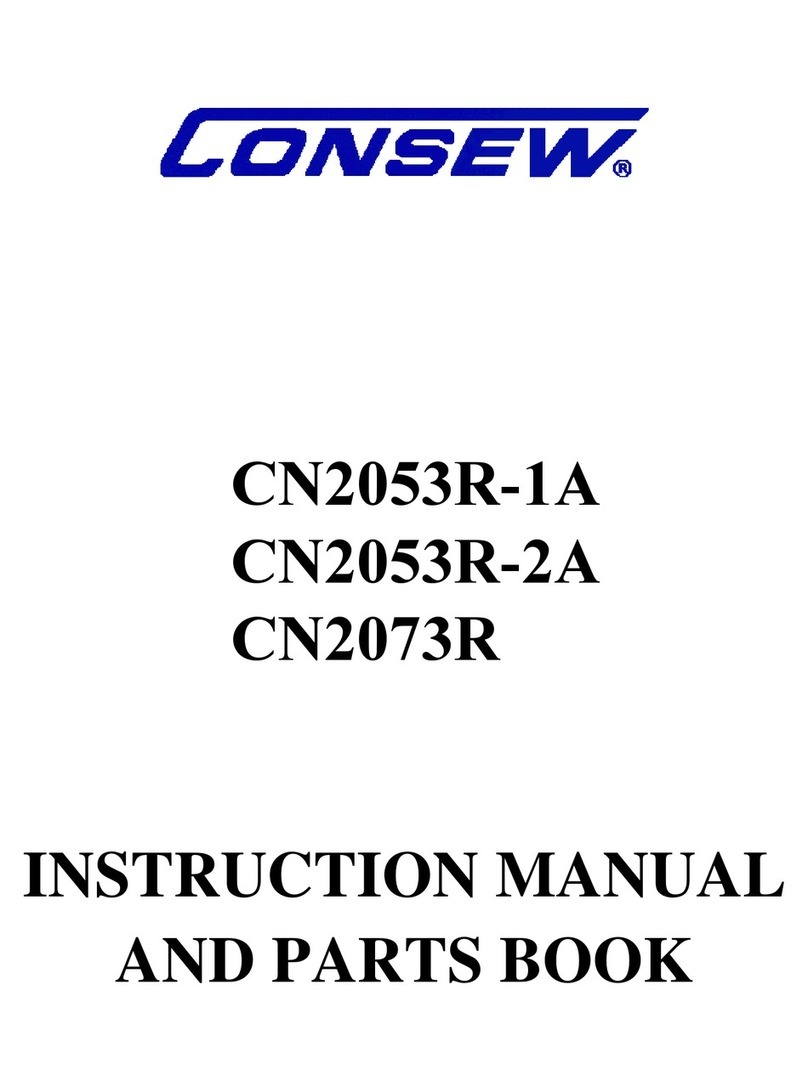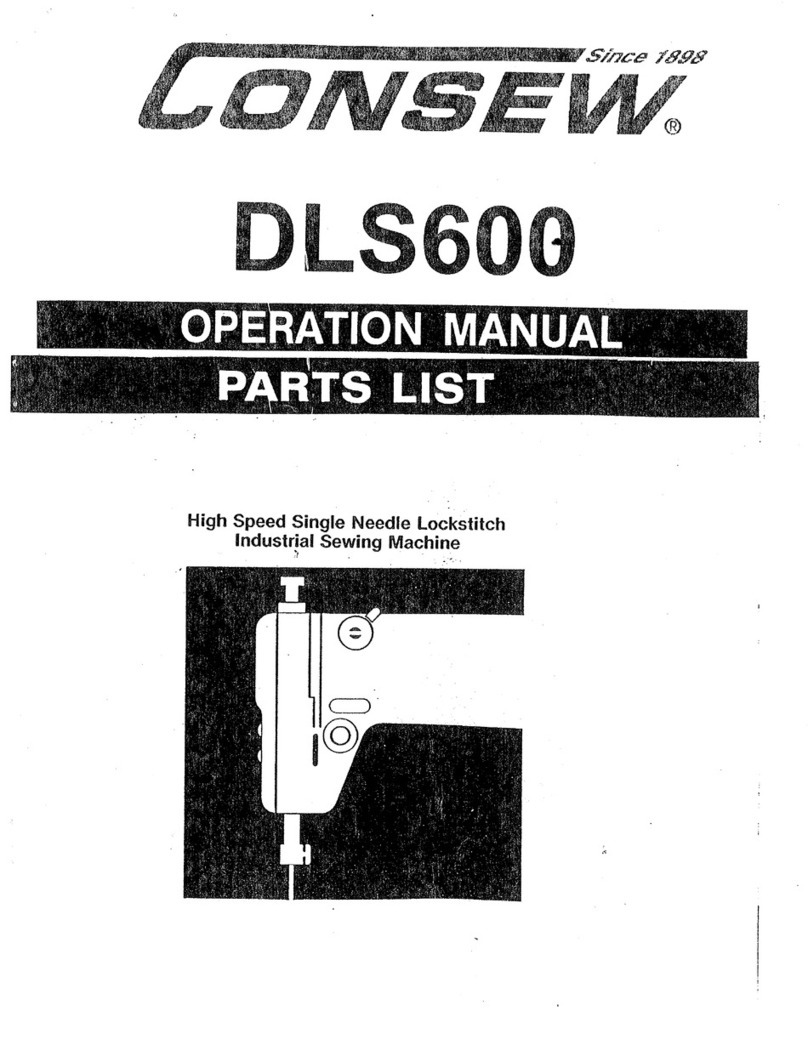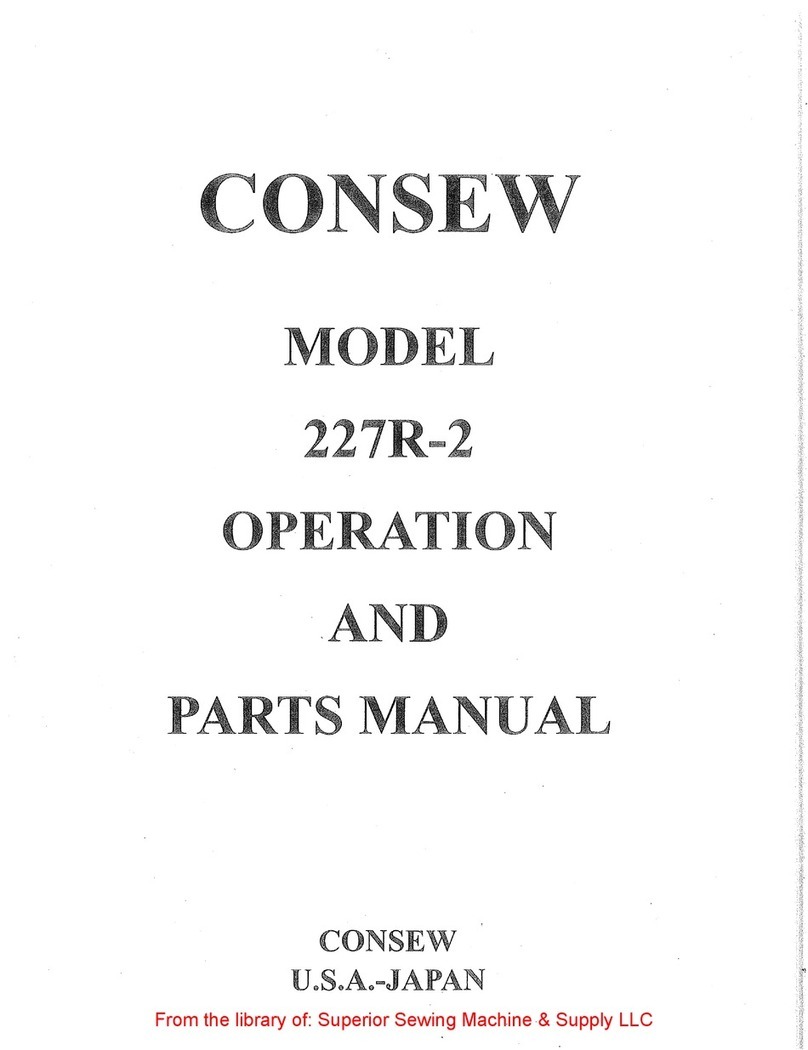CONTENTS
1.
MAIN
PARTS NAMES .........................................................·
.....
·.·
....
·..............................................................1
2.
SPECIFICATIONS ............................................................................................................................................1
3.
WORK TABLE AND MOTOR .........................................................................................................................2
4.
INSTALLATION ................................................................................................................................................3
4·1. Installing the rubber hinge and the corner rubber ................................................................................... 3
4·2.
Installing the
oil
pan
.................................................................................................................................... 3
4·3.
Installing
the
machine head ....................................................................................................................... 3
4-4.
Installing the spool pin ................................................................................................................................ 4
4-5.
Installing the knee lifter assembly ............................................................................................................. 4
4·6. Installing the belt......................................................................................................................................... 5
4·7. Installing the bobbin winder....................................................................................................................... 5
4·8. Installing the belt guard
{L)
......................................................................................................................... 6
4·9. Installing
the
thread
stand
.......................................................................................................................... 6
4·10. Lubrication ....................................................................................................................................................7
4-11. Checking the machine pulley rotating direction ....................................................................................... 8
5.
PREPARATION
BEFORE
SEWING ................................................................................................................9
5-1. Installing
the
needle .................................................................................................................................... 9
5·2. Removing
the
bobbin case ......................................................................................................................... 9
5·3. Winding the lowerthread .........................................................................................................................
10
5·4. Installing the bobbin case .........................................................................................................................
10
5·5. Threading
the
upper
thread......................................................................................................................
11
5·6. Adjusting
the
stitch length........................................................................................................................
11
6. SEWING ...........................................................................................................................................................
12
6·1. Sewing .......................................................................................................................................................
12
6·2. Backtacking ...............................................................................................................;................................
12
7. THREAD TENSION.........................................................................................................................................
13
7·1. Adjusting
the
thread tension ....................................................................................................................
13
7·2. Adjusting
the
presser foot pressure ........................................................................................................
13
8.
STANDARD ADJUSTMENTS ......................................................................................................................
14
8·1. Adjusting
the
thread
controller spring.....................................................................................................
14
8·2. Adjusting
the
height ofthe feed dog .......................................................................................................
15
8·3. Adjusting the feed dog
posi~ion
(longitudinal) .......................................................................................
15
8-4. Adjusting the positions of the needle and needle hole of the feed dog ...............................................
16
8-5. Adjusting
the
timing the needle with feed ..................,...........................................................................
17
8·6. Adjusting
the
height ofthe needle bar ....................................................................................................
17
B·7.
Adjusting the timing between the needle and hook...............................................................................
18
8·8. Adjusting the clearance between rotary hook
and
opener (thread release finger) ..............................
19
8·9. Adjusting the clearance between feed forked connection and feed fork coliar....................................
20
8·10. Adjusting the height ofthe presser feet ..................................................................................................
20
8·11. Adjusting the presser foot movement amount .......................................................................................
21
8-12.
Adjusting
the
timing of the vibrating presser foot .................................................................................
22
8-13. Adjusting
the
feed regulator ....................................................................................................................
23
9.
SAFETY CLUTCH MECHANISM .................................................................................................................
24
